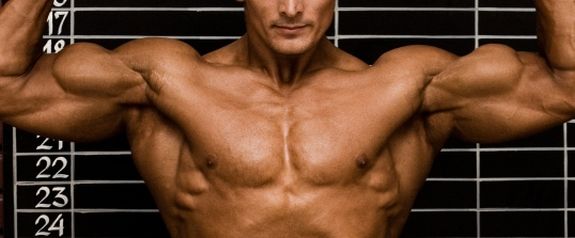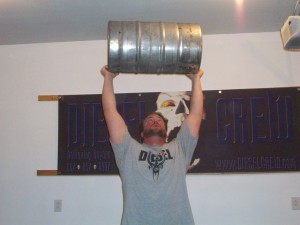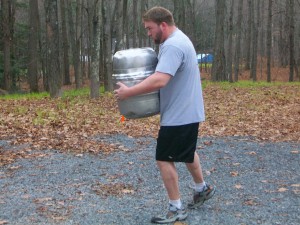Fixing Forearm Discomfort - The New RICE
by Jedd Johnson, CSCS author of Ultimate Forearm Training

We've all heard of the acronym R.I.C.E for addressing pain and injury. R = Rest, I = Ice, C = Compression, E = Elevation.
Unfortunately, when your mental stability depends on your ability to get into the gym and hit it hard on a regular basis, REST isn't always on our list of priorities.
When you're loyal to the gym and focused on building strength, it's almost inevitable to get some form of forearm pain. Often labeled with many different names, including tendonitis, epicondylitis, and others, fixing this condition can be just about as hard putting the correct name on it.
I have delt with this condition for years, because not only do I spend a great deal of time working on full body strength but I also put a lot of concentration on performing Grip Strength Feats and competing in Grip Strength Contests. My hands and lower arms take a beating throughout the year.
 To my benefit, since so much of my time has been devoted to keeping my lower arms healthy, I have spent a lot of time researching and putting into practice many methods for injury prevention and recovery.
To my benefit, since so much of my time has been devoted to keeping my lower arms healthy, I have spent a lot of time researching and putting into practice many methods for injury prevention and recovery.
To prevent and recover from nagging forearm pain, I have developed my own R.I.C.E. acronym that is slightly different from the classic one.
R - Raise: Just like Elevation from the classic acronym, I try to keep my arm raised above my heart when injured. I alsoespecially keep my lower arms off any hard surfaces at all times. If I put my elbow down on a desk or table, I put a towel between my arm and the table. I avoid any kind of undue stress or pressure from things like the edges of tables, doorways, etc. Reducing the amount of external trauma helps you manage the trauma you already have. Sounds crazy, but it makes a difference.
I - Increase Temperature: If I feel any inflammation coming on, I immediately get out my elbow sleeves to help increase the temperature within the area. I try not to use them all the time because I do not want to become dependent on them once the pain is gone. My sleeves are loose and are only meant to keep the area warm, not super tight to aid in lifts. A good practice if you try it is to keep them on hand and wear them at least for warm-ups, especially if you aren't feeling 100% or if your sleep or hydration patterns are off.
C - Compression: If I get pain the forearms, I compress the tendons down, away from the spot of pain. This elongates the area of tissue that rubs with other surfaces and can reduce inflamation in the main spot that is causing pain.
E - Extensors: Far too many people are strong in their flexors but weak in their extensors. This imbalance at the very least will keep you from developing your full potential for strength, while it can also lead to injuries.
I work extensors every single workout. One of the easiest ways to do this is with rubber bands.
RUBBER BAND EXTENSOR WORK
All you need to effectively work the extensor muscles is a pair of solid rubber bands. I like #8 rubber bands that you can pick up in a zip-lock bag from Staples.
 Just wrap the rubber band around the outside of your fingers and then open them up against the resistance. You should feel the muscles in the back of the forearm working.
Just wrap the rubber band around the outside of your fingers and then open them up against the resistance. You should feel the muscles in the back of the forearm working.
Here is an example Grip Workout where I incorporate Rubber Band Extensions into a Grip Training Circuit...
If you don't like the idea of hitting Rubber Bands for so many reps, you can use two bands on each hand to increase the resistance.
Another variation of Rubber Band Extensions I like is the Double Extension. This is done by first extending the fingers against the band and then fully extending the wrist. This heightens the level of contraction in the muscle in the back of the forearm, stimulating them even more intensely. I work this variation in quite often and love it.
Getting your lower arms and hands strong requires a balanced approach between proper strength training and injury prevention in your program.
Ultimate Forearm Training for Baseball

More Articles By Jedd Johnson
Return to the Workout Articles Archive
|